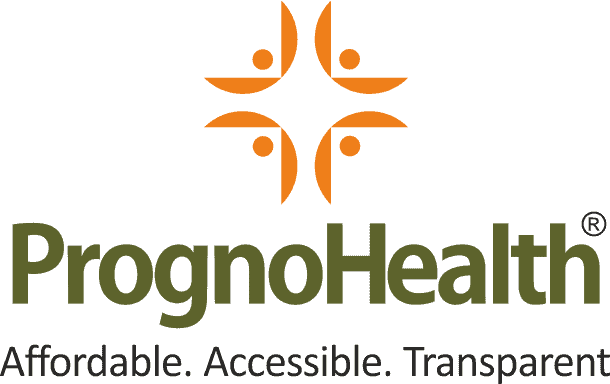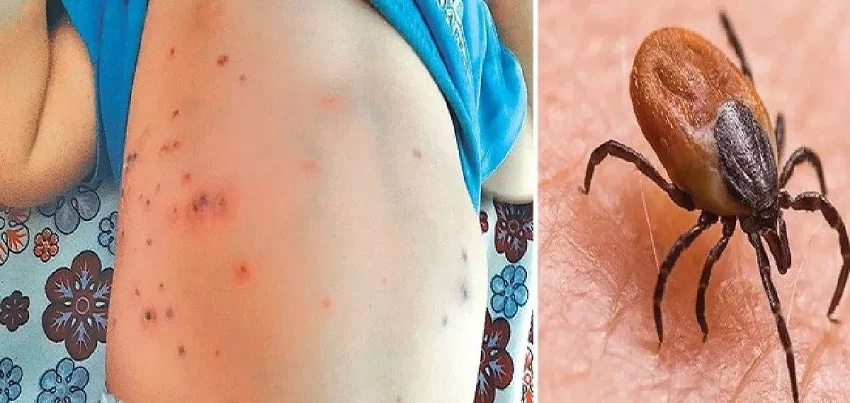PrognoHealth – Corporate Health & Wellness Specialist
Contact Us
+91 9510650660
Email Us
corpsales@prognohealth.com
Contact Us
+91 9510650660
Email Us
corpsales@prognohealth.com
Understanding Scrub Typhus: Symptoms, Treatment, and Prevention
Scrub typhus, also known as bush typhus or scrub fever, is a bacterial infection caused by the bacteria Orientia tsutsugamushi. It is spread through the bite of infected mites, typically found in rural or agricultural areas, and can have serious and even fatal consequences if left untreated. In this blog post, we will discuss the symptoms, tests for diagnosis, common treatment methods, and ways to prevent scrub typhus from occurring. We will also discuss how annual health check-ups and corporate health and wellness programs can help prevent and manage the risk of this infection.
Symptoms of scrub typhus typically appear within 1 to 2 weeks after being bitten by an infected mite. Common symptoms include fever, headache, muscle pain, nausea and vomiting, and a rash on the trunk of the body. As the disease progresses, more severe symptoms may develop, such as abdominal pain, confusion, and difficulty breathing.
Diagnosis of scrub typhus is typically done through a blood test that detects antibodies to the O. tsutsugamushi bacteria. A PCR test can also be done to confirm the diagnosis, but this test is not widely available. A physical examination may also be done to look for any visible signs of the infection, such as a rash.
Treatment for scrub typhus typically involves a course of antibiotics, such as doxycycline or azithromycin. The length of treatment and the specific antibiotics used will depend on the severity of the infection and any underlying health conditions. In most cases, the symptoms will improve within a few days of starting treatment and the patient will recover fully.
Preventing scrub typhus from occurring is primarily done by avoiding areas where infected mites are found, such as rural or agricultural areas, and using protective measures, such as wearing long sleeves and pants, and using insect repellent. Corporate health and wellness programs can also help prevent the spread of scrub typhus by providing information and resources on safe travel practices and protective measures.

Scrub typhus, also known as Bush Typhus, is an infectious disease caused by the bacteria Orientia tsutsugamushi. This disease is transmitted to humans through the bite of infected chiggers, which are the larval stage of mites. Scrub typhus is prevalent in regions of Asia, the Pacific Islands, and northern Australia, where these mites thrive in scrub vegetation.
Scrub Typhus Disease
Scrub typhus disease can present a range of clinical manifestations, from mild symptoms to severe, life-threatening conditions. The incubation period typically ranges from 6 to 21 days after the bite of an infected chigger. Early diagnosis and prompt treatment are crucial to prevent complications and improve outcomes.
Scrub Typhus Symptoms
The initial symptoms of scrub typhus often include fever, headache, body aches, and a generalized feeling of illness. As the disease progresses, patients may experience a characteristic black eschar (a scab at the site of the chigger bite), rash, swollen lymph nodes, and gastrointestinal symptoms such as nausea and vomiting. In severe cases, scrub typhus can lead to complications such as pneumonitis, encephalitis, myocarditis, and multi-organ failure.
Scrub Typhus Treatment
Effective treatment for scrub typhus involves the use of specific antibiotics. Doxycycline is the drug of choice and is typically administered for 5 to 7 days. For patients allergic to doxycycline or in specific populations such as pregnant women, azithromycin can be used as an alternative. Early administration of antibiotics significantly reduces the risk of severe complications and hastens recovery.
Tsutsugamushi Treatment
Treatment targeting Orientia tsutsugamushi, the causative agent of scrub typhus, revolves around the same antibiotics mentioned earlier, with doxycycline and azithromycin being the primary choices. It’s essential to start treatment as soon as scrub typhus is suspected, even before laboratory confirmation, to ensure the best possible outcomes.
Scrub Typhus Test
Diagnosing scrub typhus involves a combination of clinical evaluation and laboratory testing. The scrub typhus antibody test and the scrub typhus diagnostic test, such as PCR (Polymerase Chain Reaction) or indirect immunofluorescence assay (IFA), are commonly used to confirm the infection. A blood test for scrub typhus helps detect antibodies against Orientia tsutsugamushi, indicating an active or past infection.
Scrub Typhus Caused By
Scrub typhus is caused by the bacterium Orientia tsutsugamushi, which is transmitted to humans through the bite of infected chiggers. These mites are commonly found in areas with heavy scrub vegetation, hence the name “scrub typhus.”
Causes Of Scrub Typhus
The primary cause of scrub typhus is the bite of an infected chigger. These mites thrive in rural and suburban areas with dense vegetation, making people living or working in such environments more susceptible to the disease. Preventing chigger bites through appropriate clothing, insect repellents, and avoiding known infested areas are key measures in the prevention of scrub typhus.
Prevention Of Scrub Typhus
Preventive measures for scrub typhus include avoiding mite-infested areas, wearing protective clothing, using insect repellents, and maintaining personal hygiene to reduce the risk of chigger bites. Regularly laundering clothes and taking showers after exposure to potential habitats can also help in prevention.
Scrub Fever
Scrub fever, another term for scrub typhus, refers to the febrile illness caused by Orientia tsutsugamushi infection. The fever can be persistent and high, accompanied by other systemic symptoms that necessitate medical attention.
Scrub Typhus Treatment At Home
While home treatment is not recommended for scrub typhus due to the need for specific antibiotics, supportive care measures such as adequate hydration, rest, and over-the-counter medications to alleviate fever and pain can complement professional medical treatment. However, it is crucial to seek medical advice for appropriate antibiotic therapy.
Scrub Typhus Infection
A scrub typhus infection begins with the bite of an infected chigger. The bacteria then enter the bloodstream and multiply, causing systemic symptoms. Early detection and treatment are essential to control the infection and prevent serious complications.
Scrub Typhus Diagnostic Test
Laboratory tests for diagnosing scrub typhus include the scrub typhus antibody test, PCR, and IFA. These tests help detect the presence of Orientia tsutsugamushi or the body’s immune response to the infection, aiding in confirming the diagnosis and guiding treatment.
Scrub Typhus Bush Typhus
Scrub typhus, also known as bush typhus, highlights its association with bushy or scrubby areas where the vector chiggers are found. The term “bush typhus” underscores the importance of understanding the environmental risk factors for the disease.
Best Medicine For Scrub Typhus
The best medicine for scrub typhus is doxycycline, which is highly effective in treating the infection. Azithromycin serves as a suitable alternative for those who cannot tolerate doxycycline. Prompt antibiotic therapy is vital for recovery.
Scrub Typhus Signs And Symptoms
Signs and symptoms of scrub typhus include fever, headache, body aches, eschar, rash, swollen lymph nodes, and gastrointestinal disturbances. Recognizing these signs early and seeking medical care is crucial for effective treatment.
Scrub Typhus Treatment Duration
The typical duration of scrub typhus treatment with antibiotics is 5 to 7 days. The exact duration may vary based on the severity of the infection and the patient’s response to treatment.
Scrub Typhus Complications
Complications of scrub typhus can be severe and include pneumonia, encephalitis, myocarditis, acute renal failure, and multi-organ dysfunction. Early diagnosis and treatment are essential to prevent these potentially life-threatening complications.
In summary, scrub typhus is a serious infectious disease requiring prompt medical attention. Understanding scrub typhus symptoms and treatment, recognizing the causes of scrub typhus, and taking preventive measures can significantly reduce the risk and impact of this disease.
Diet and exercise do not have a direct role in preventing scrub typhus. However, maintaining a healthy diet and regular physical activity can help boost the immune system, which can make it more difficult for the O. tsutsugamushi bacteria to take hold.
In conclusion, scrub typhus is a bacterial infection caused by O. tsutsugamushi, which is spread through the bite of infected mites. Symptoms typically appear within 1 to 2 weeks after being bitten and can include fever, headache, muscle pain, nausea and vomiting, and a rash. Diagnosis is typically done through a blood test and treatment involves a course of antibiotics. Preventing scrub typhus is primarily done by avoiding areas where infected mites are found and using protective measures. Corporate health and wellness programs can also help prevent the spread of scrub typhus by providing information and resources on safe travel practices and protective measures. Maintaining a healthy diet and regular physical activity can help boost the immune system, which can make it more difficult for the O. tsutsugamushi bacteria to take hold. It is important to get regular check-ups, especially if you are traveling to an area known to have scrub typhus, to detect and treat it early to prevent severe complications.
Frequently Asked Questions (FAQ’s):
1. What is scrub typhus?
Answer: Scrub typhus, also known as bush typhus, is an infectious disease caused by the bacterium Orientia tsutsugamushi. It is transmitted to humans through the bite of infected chiggers, which are the larval stage of mites.
2. What are the symptoms of scrub typhus?
Answer: Symptoms of scrub typhus include fever, headache, body aches, rash, and a characteristic black scab (eschar) at the site of the chigger bite. Other symptoms can include swollen lymph nodes, nausea, and vomiting.
3. How is scrub typhus diagnosed?
Answer: Scrub typhus is diagnosed through a combination of clinical symptoms and laboratory tests. Blood tests, such as the scrub typhus antibody test or PCR (Polymerase Chain Reaction), are used to detect the presence of Orientia tsutsugamushi.
4. What is the treatment for scrub typhus?
Answer: The primary treatment for scrub typhus is antibiotics, with doxycycline being the most commonly prescribed. Azithromycin can be used as an alternative, especially for pregnant women or those allergic to doxycycline.
5. How is scrub typhus transmitted?
Answer: Scrub typhus is transmitted through the bite of infected chiggers, which are found in areas with dense scrub vegetation. The chiggers carry the bacterium Orientia tsutsugamushi and pass it on to humans during feeding.
6. What is a scrub typhus test?
Answer: A scrub typhus test refers to laboratory tests used to diagnose the disease, such as the antibody test, PCR, or indirect immunofluorescence assay (IFA). These tests detect the bacterium or the body’s immune response to it.
7. What are the complications of scrub typhus?
Answer: Severe complications of scrub typhus can include pneumonia, encephalitis, myocarditis, acute renal failure, and multi-organ dysfunction. Prompt treatment is crucial to prevent these complications.
8. How long does scrub typhus treatment last?
Answer: The typical duration of antibiotic treatment for scrub typhus is 5 to 7 days, depending on the severity of the infection and the patient’s response to the medication.
9. Can scrub typhus be treated at home?
Answer: While initial care such as rest and hydration can be managed at home, scrub typhus requires prescription antibiotics, so medical consultation is necessary for appropriate treatment.
10. What causes scrub typhus?
Answer: Scrub typhus is caused by the bacterium Orientia tsutsugamushi, which is transmitted to humans through the bite of infected chiggers found in areas with scrub vegetation.
11. How can scrub typhus be prevented?
Answer: Prevention of scrub typhus involves avoiding chigger-infested areas, wearing protective clothing, using insect repellents, and maintaining good personal hygiene. It is also helpful to launder clothes and take showers after potential exposure.
12. What is the best medicine for scrub typhus?
Answer: The best medicine for scrub typhus is doxycycline, which is effective in treating the infection. Azithromycin is an alternative option for individuals who cannot take doxycycline.
13. What are the signs and symptoms of scrub typhus?
Answer: The signs and symptoms of scrub typhus include high fever, headache, muscle pain, rash, swollen lymph nodes, and a black eschar at the site of the chigger bite. Severe cases may involve respiratory and neurological symptoms.
14. What is scrub fever?
Answer: Scrub fever is another term for scrub typhus, referring to the febrile illness caused by the infection with Orientia tsutsugamushi. It includes symptoms like fever, rash, and body aches.
15. What is the role of the scrub typhus antibody test?
Answer: The scrub typhus antibody test detects antibodies in the blood that the body produces in response to Orientia tsutsugamushi infection. This test helps confirm the diagnosis of scrub typhus.
Blog Categories
Top rated products
-
 FB Health Checkup I
Rated 5.00 out of 5
FB Health Checkup I
Rated 5.00 out of 5₹3,000.00Original price was: ₹3,000.00.₹1,770.00Current price is: ₹1,770.00. -
 Young Life Basic
Rated 0 out of 5
Young Life Basic
Rated 0 out of 5₹3,000.00Original price was: ₹3,000.00.₹1,350.00Current price is: ₹1,350.00. -
 COVID 19 Rapid Antigen Test
Rated 0 out of 5
COVID 19 Rapid Antigen Test
Rated 0 out of 5₹668.00Original price was: ₹668.00.₹501.00Current price is: ₹501.00. -
 MFG IND PACK III
Rated 0 out of 5
MFG IND PACK III
Rated 0 out of 5₹3,900.00Original price was: ₹3,900.00.₹2,145.00Current price is: ₹2,145.00. -
 Healthy Life Advance Male
Rated 0 out of 5
Healthy Life Advance Male
Rated 0 out of 5₹15,000.00Original price was: ₹15,000.00.₹8,250.00Current price is: ₹8,250.00.
About Us
Progno Health is a Corporate Health & Wellness Specialist providing services to Pan India. We offer Pre-employment Health Checkup Packages, Annual Health Checkup Packages, Executive Health Checkup Packages, Occupational Health Checkup Packages, and other Health & Wellness Services.




